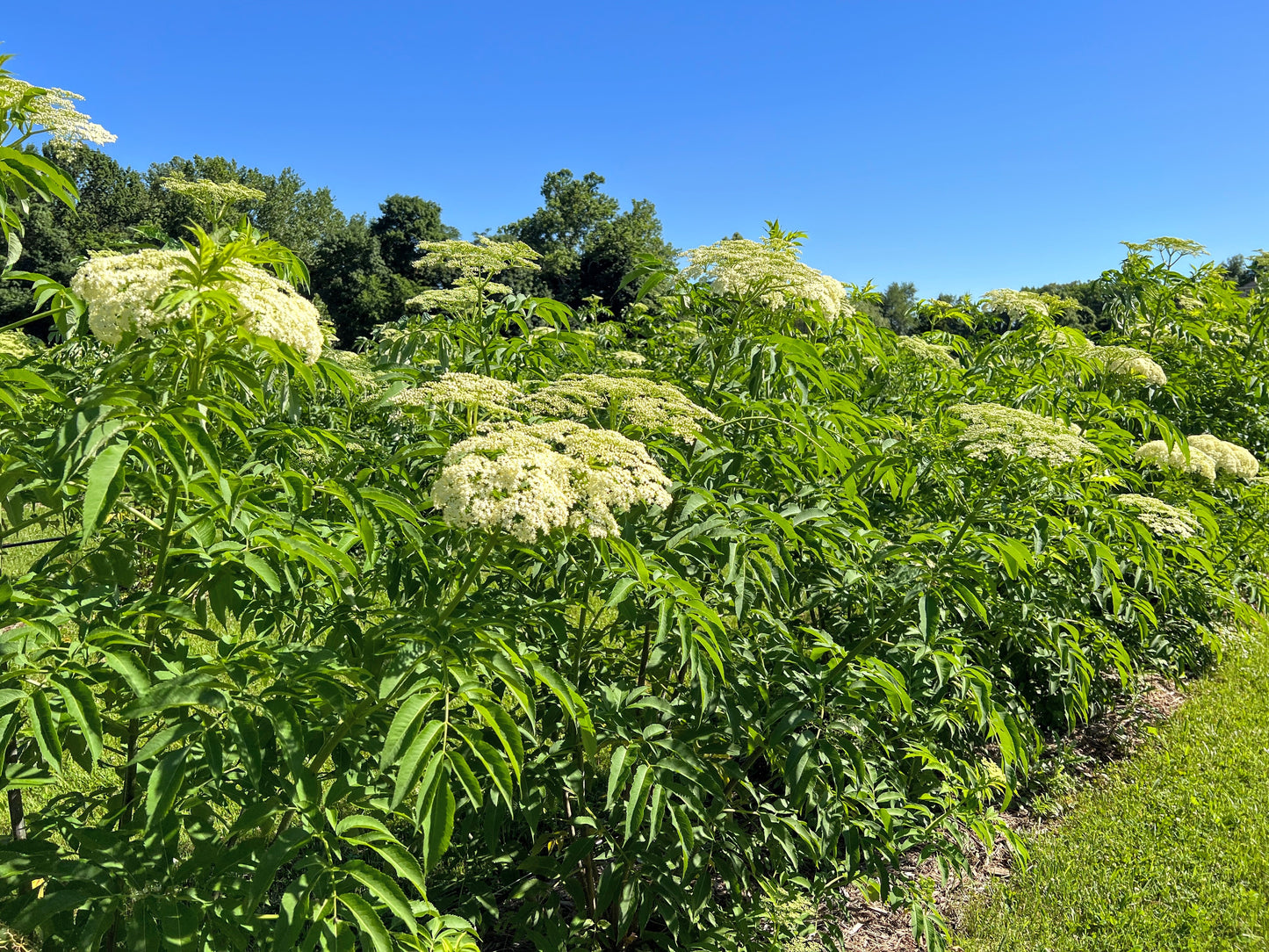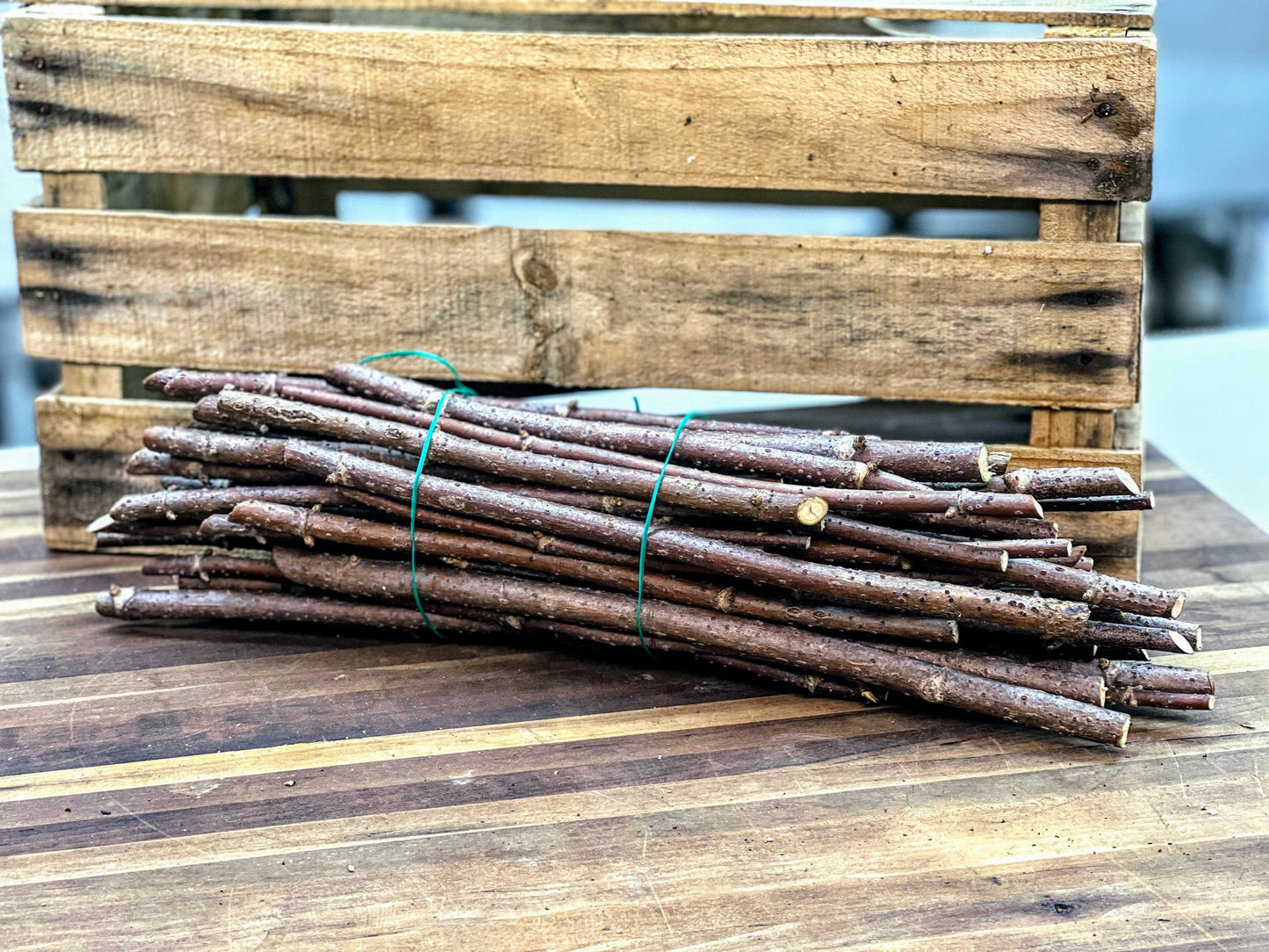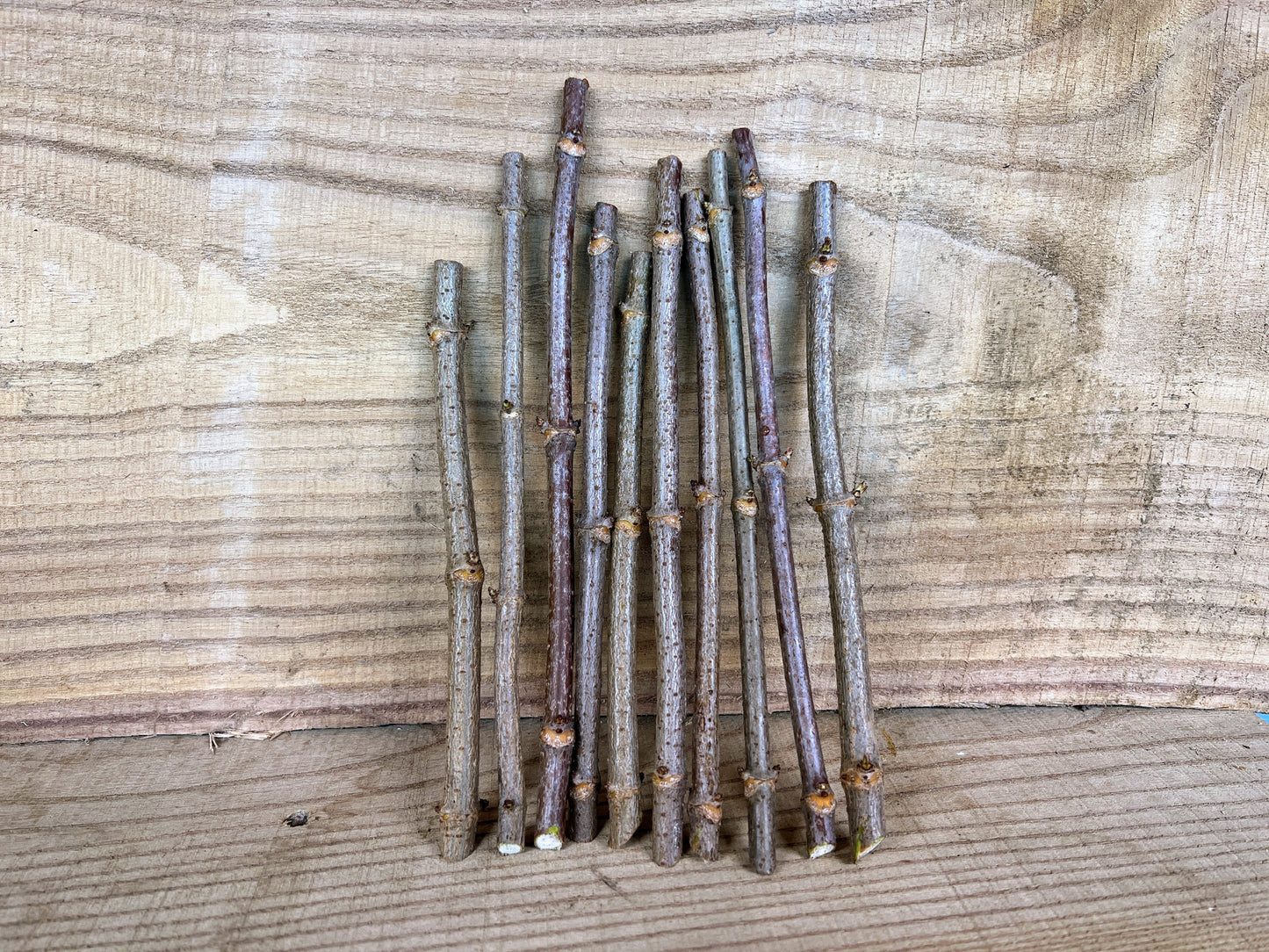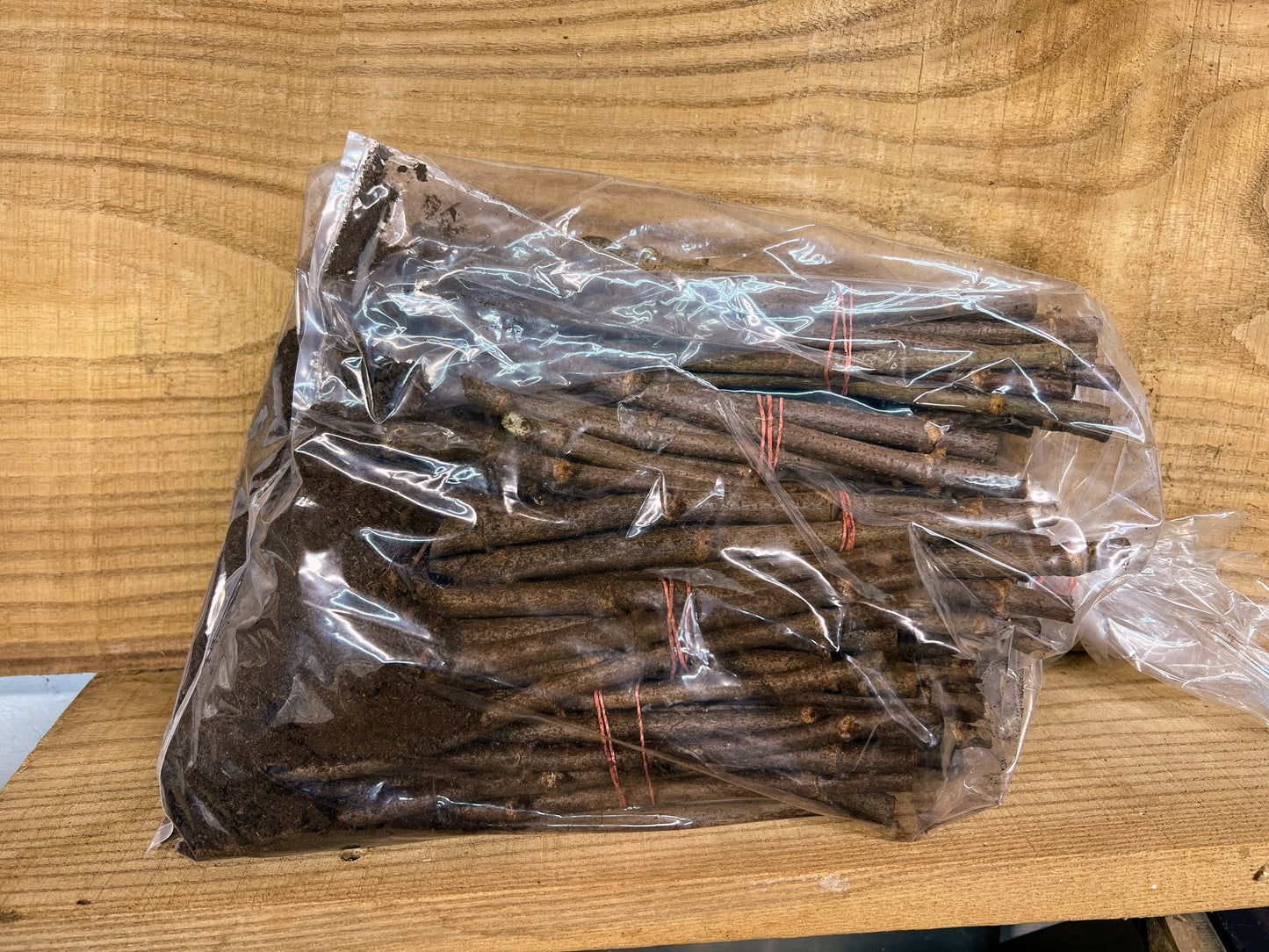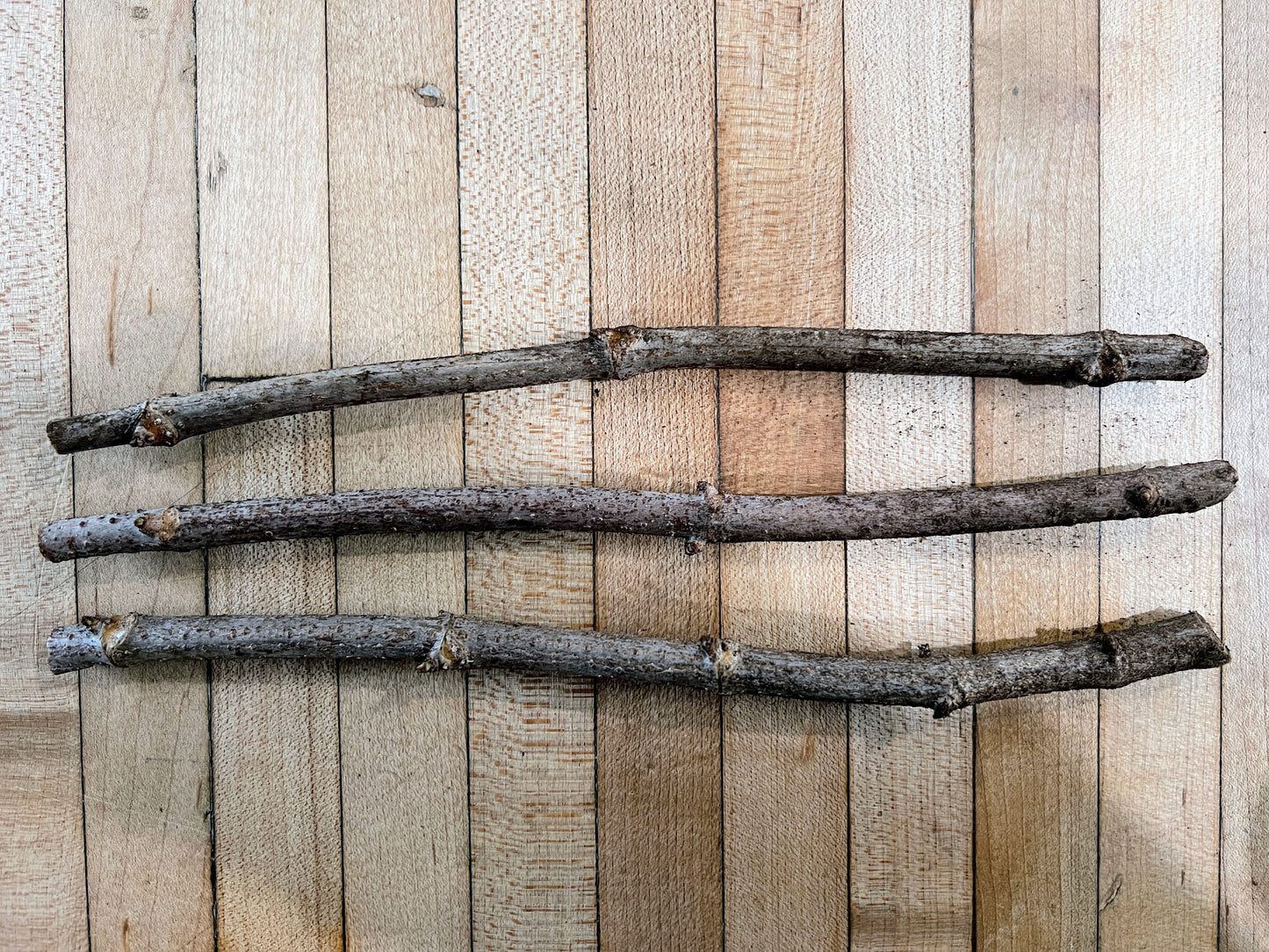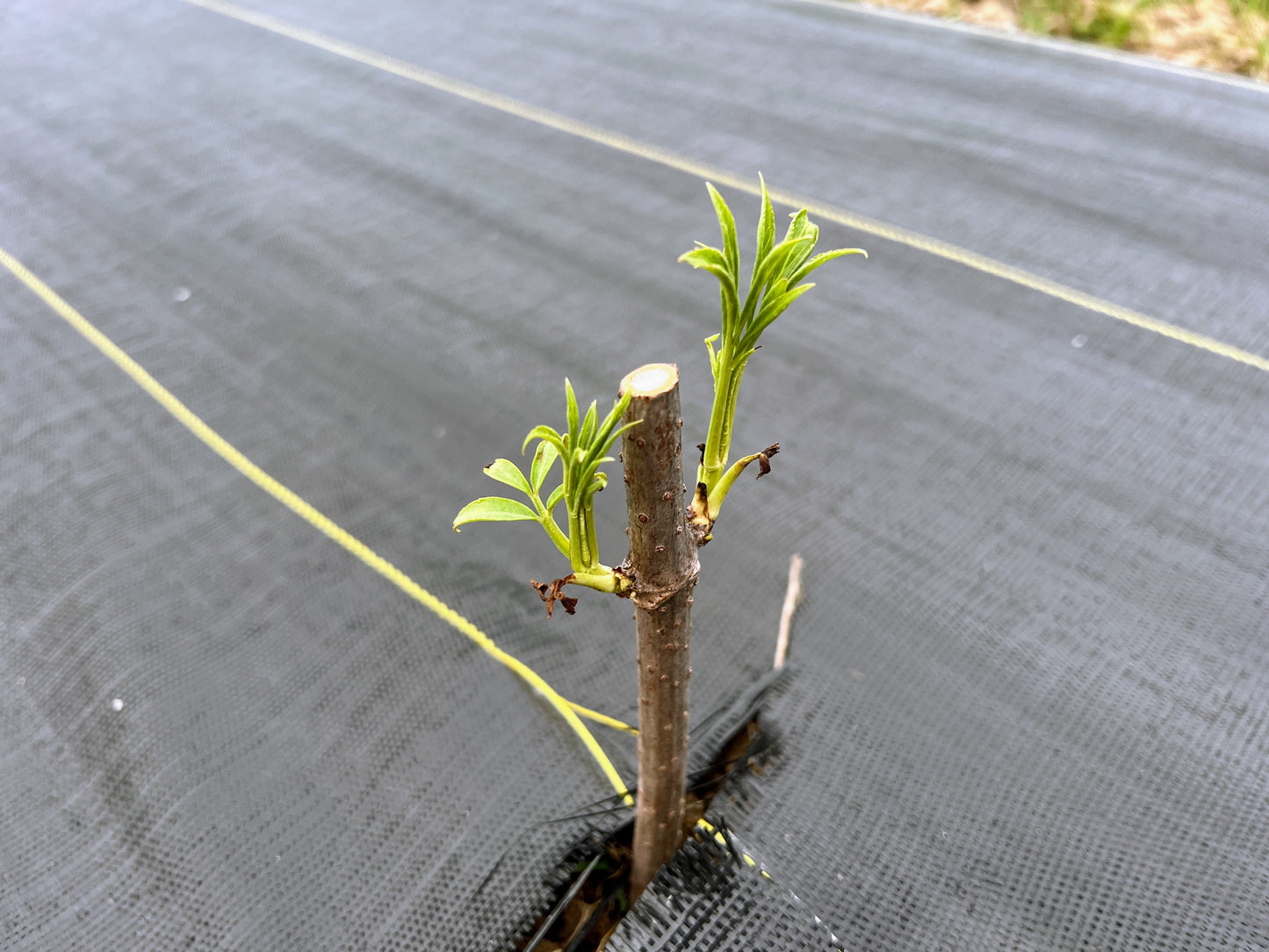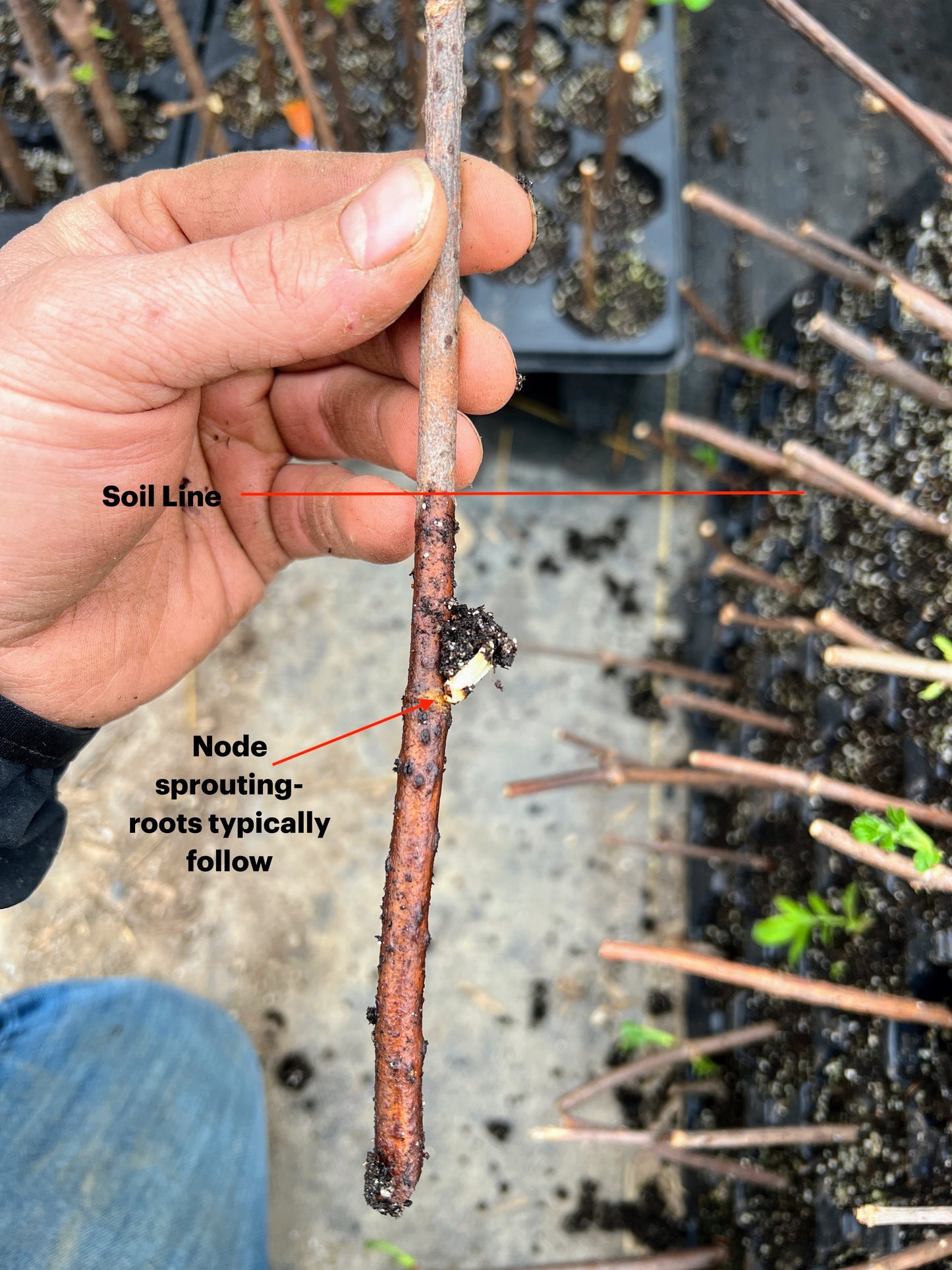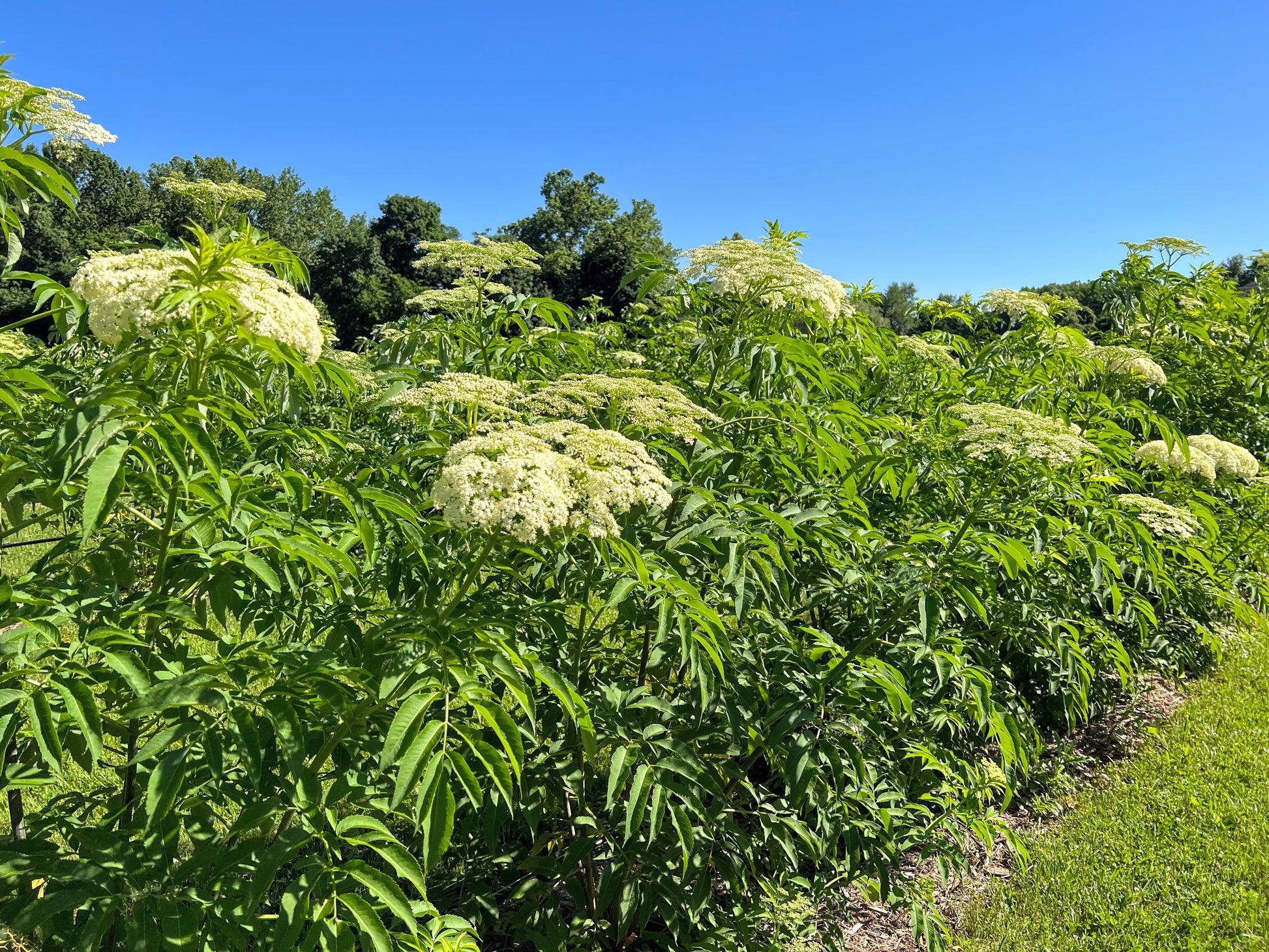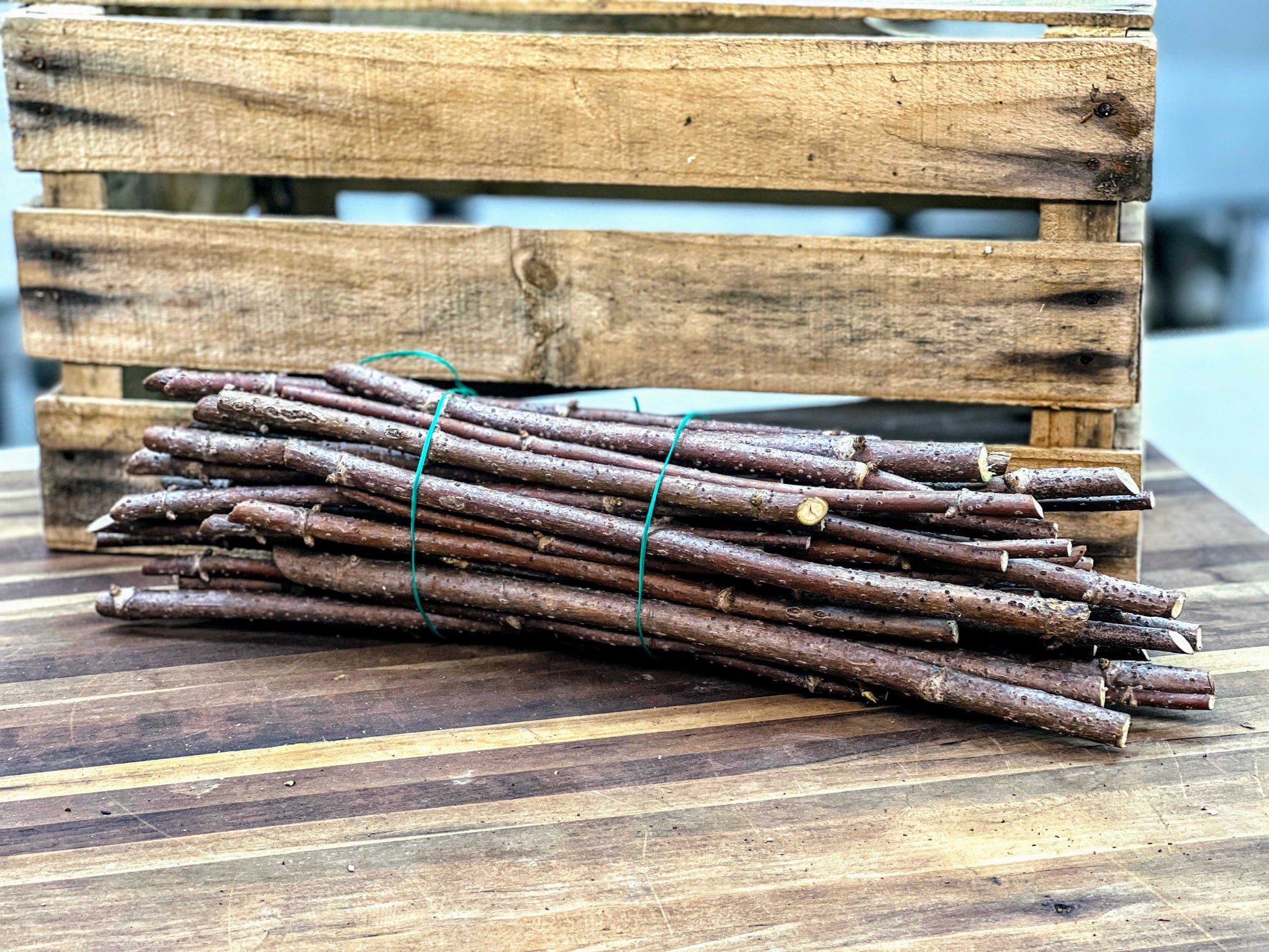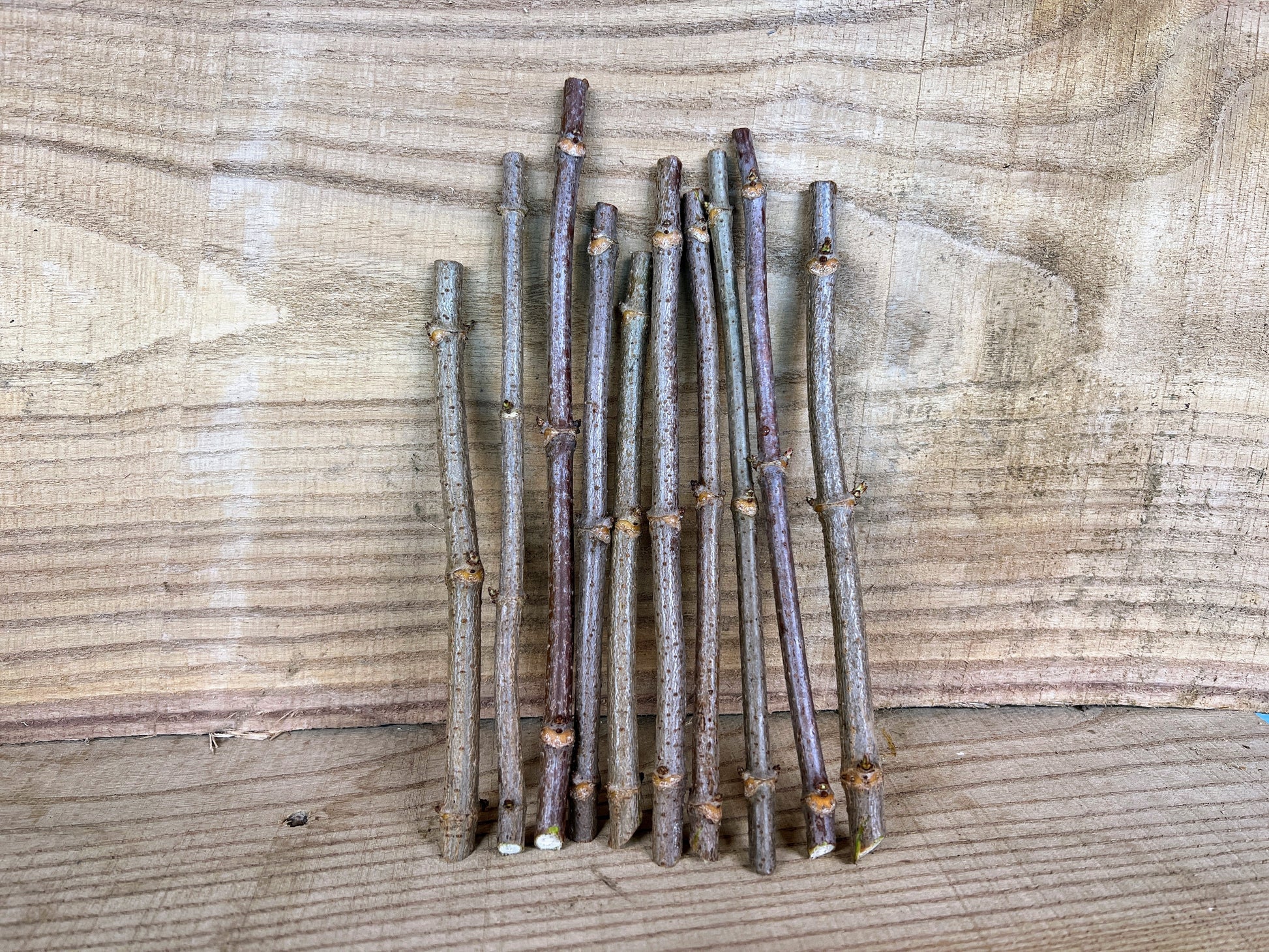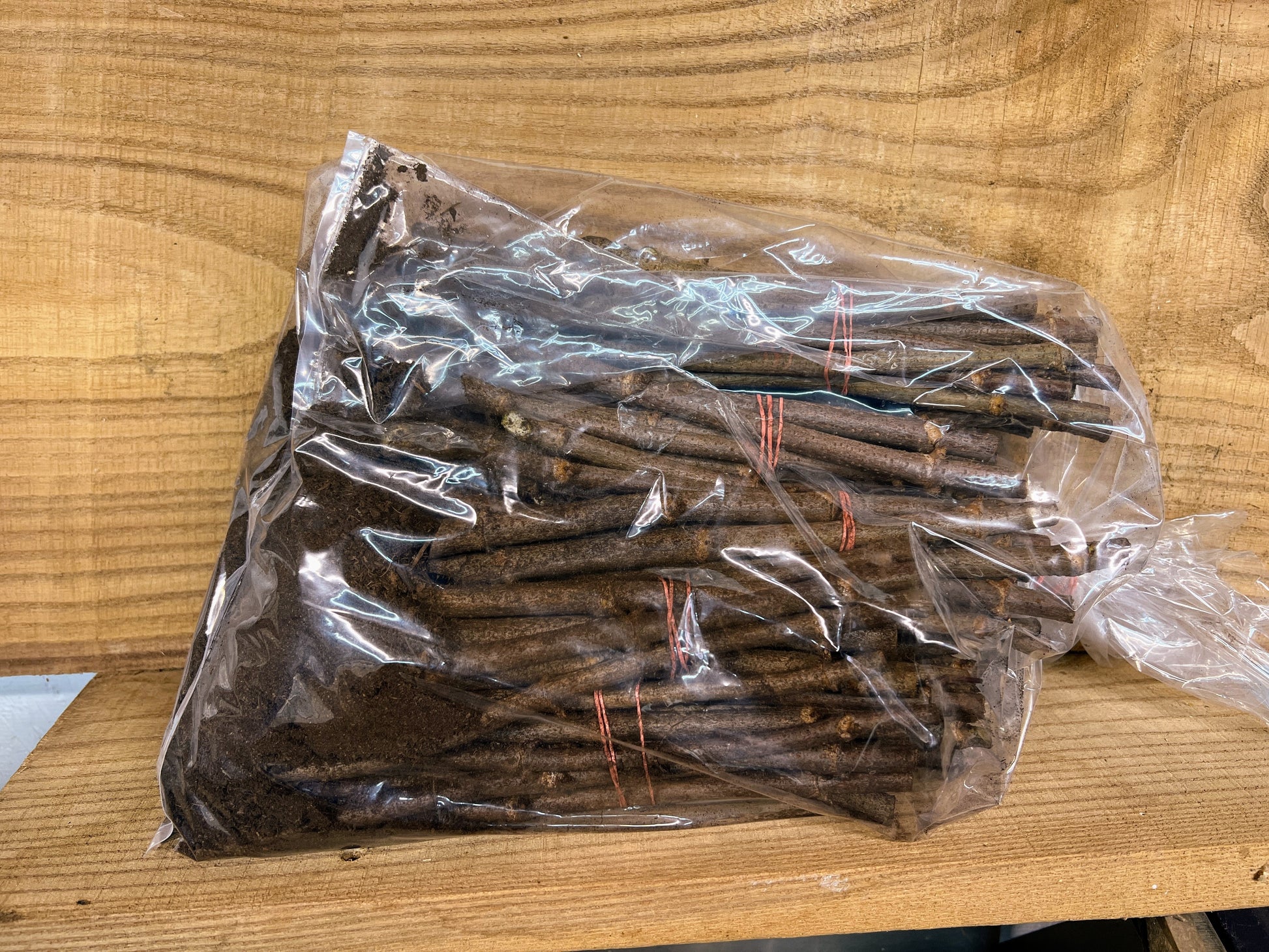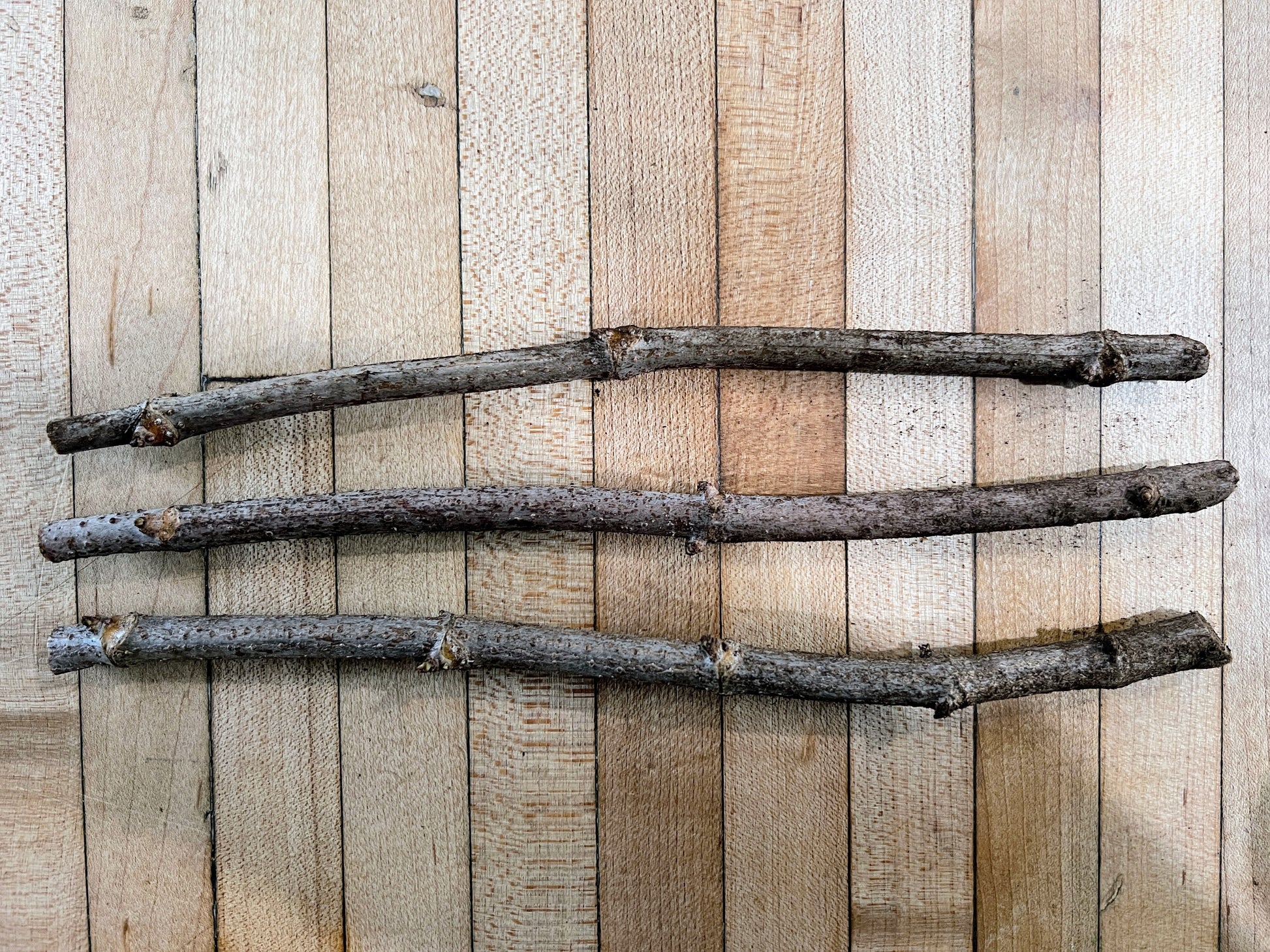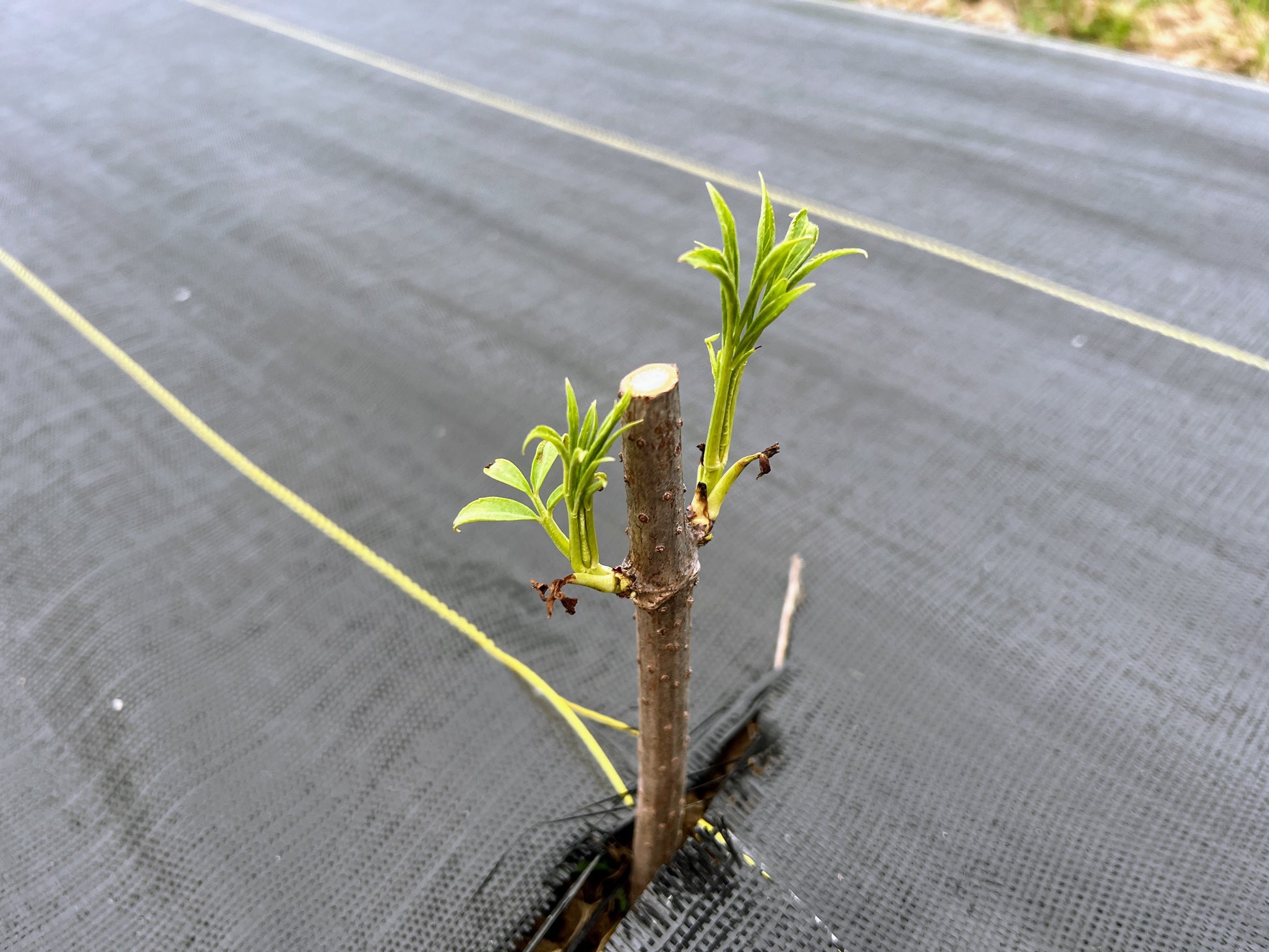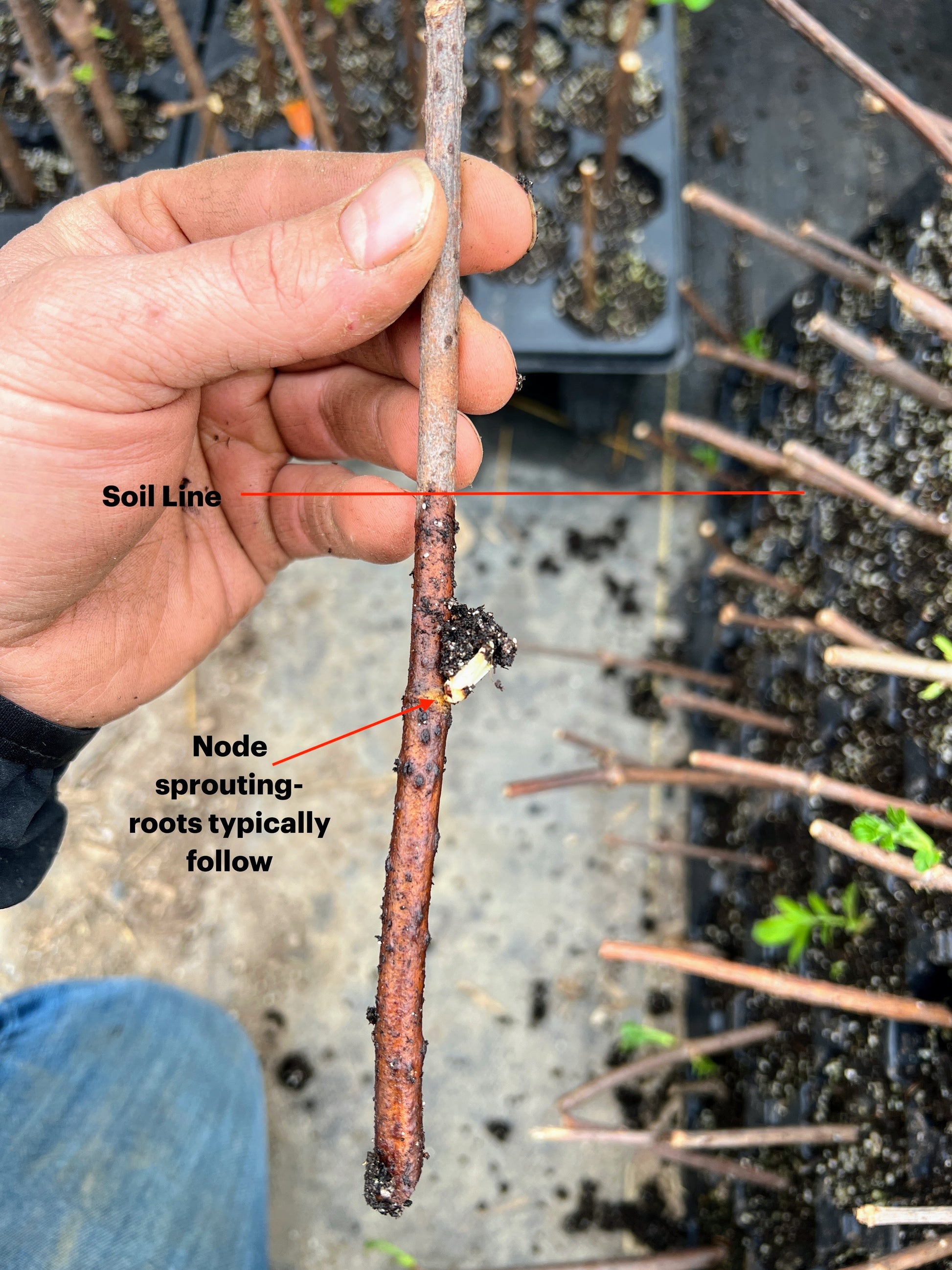| PREORDER | GoodBarn Elderberry
| PREORDER | GoodBarn Elderberry
Couldn't load pickup availability
:: Preorder - Shipping in Spring 2026 ::
Bring the exceptional Goodbarn Elderberry (Sambucus canadensis 'Goodbarn') to your garden, a robust American elderberry variety known for its high yields, adaptability, and versatility. Introduced by plant breeder Elwyn Meader, this variety was discovered thriving near his barn and has since become a favorite among home gardeners and small-scale growers for its self-fertility and dependable fruit production.
Why Choose Goodbarn Elderberry?
- Abundant Harvests: Produces heavy clusters of dark purple-black berries ideal for fresh eating, syrups, wines, and jams.
- Self-Fertile: While Goodbarn does not require another elderberry variety for fruiting, planting a second variety can boost yields.
- Beautiful Blooms and Fall Foliage: Clusters of creamy white flowers in June attract pollinators, while its vibrant fall foliage adds ornamental value.
- Cold-Hardy and Adaptable: Thrives in Zones 3-9 and grows well in a variety of climates.
- Fast-Growing and Vigorous: Reaches 5-10 feet tall and wide, with a broad, multi-stemmed growth habit perfect for hedges or privacy screens.
-
Reliable Ripening: Berries ripen in late summer, around August, extending your harvest window.
Medicinal and Nutritional Benefits
Goodbarn elderberries offer a nutrient rich profile packed with antioxidants, anthocyanins, vitamin C, vitamin A, and beneficial flavonoids that support immune function and overall vitality. Traditionally valued in herbal medicine, elderberries are used to promote respiratory wellness, strengthen natural defenses, and provide seasonal support. Their deep purple pigment indicates a high concentration of antioxidant compounds that help combat oxidative stress. Goodbarn’s plentiful late summer harvests provide abundant berries ideal for syrups, teas, tinctures, jams, wines, and homemade wellness preparations.
Planting and Growing Instructions
- Preparing the Cuttings: Place cuttings in water or moist soil immediately upon arrival. You can root them indoors or directly outdoors in suitable conditions.
- Planting Time: Best planted in early spring as soon as the ground thaws or in mid-spring.
- Location: Choose a site with full sun to partial shade for optimal growth and fruiting.
- Soil Preferences: Prefers moist, well-draining soil and tolerates a variety of soil types. Slightly acidic to neutral pH (6.0-7.0) is ideal.
- Spacing: Space plants 2-4 feet apart in rows with rows 10-14 feet apart for proper airflow and production.
- Watering: Keep the soil consistently moist as cuttings establish roots. Once rooted, water regularly, especially during dry periods.
- Pruning: Prune in late winter or early spring to remove dead wood and encourage new growth, as berries form on first-year wood.
Pro Tips for Success
- Cross-Pollination Boost: While Goodbarn is self-fertile, planting another variety such as Johns or Adams nearby can further enhance fruit production.
- Harvesting: Pick berries when fully ripe (dark purple-black) in late summer for maximum flavor and nutritional benefits.
- Multi-Use Plant: Goodbarn Elderberry works as a productive fruiting shrub, a stunning ornamental plant, or a pollinator-friendly hedgerow.
All elderberry bundles include a minimum of three cuttings, each with two or more nodes. Please reference product photos for examples of bundle sizes.
Shipping Details: Sold as dormant cuttings in bundles, shipped fresh starting in February. STORE IN YOUR REFRIGERATOR UNTIL PLANTING.
Non-GMO Commitment: At Growing Farmers and The Farm on Central, all our plants are guaranteed non-GMO and not genetically modified in any way, upholding natural breeding methods and promoting sustainable gardening and farming practices.
Growing method: Grown on our Coop farms using natural growing methods, no chemicals used.
Which Elderberry Should I Grow?
Elderberry Growing Instruction Guide
